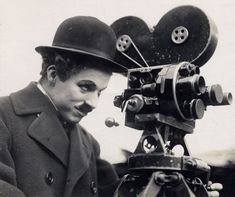10 Best Directors Who Defined Surrealism in Movies

The world of cinema is vast and varied, with many directors who have dipped their cinematic brushes into the surreal wells to create masterpieces that defy ordinary reality. When it comes to surrealism in movies, these ten directors aren’t just participants; they are the maestros who defined and redefined the genre through their inventive visions and storytelling. Here is a look at the ten best directors known for their contribution to surrealism in movies:
1.Luis Buñuel – Often referred to as the father of cinematic surrealism, Buñuel’s works like “Un Chien Andalou” and “The Discreet Charm of the Bourgeoisie” are seminal in their dreamlike narrative and imagery.
2.David Lynch – With movies like “Eraserhead,” “Blue Velvet,” and the television series “Twin Peaks,” Lynch’s works delve deep into the abstract and the absurd, leaving viewers spellbound by his avant-garde approach.
3.Federico Fellini – The Italian director’s films, especially “8 ½” and “La Dolce Vita,” showcase a blend of fantasy and reality which beautifully captures the surreal elements of everyday life.
4.Alejandro Jodorowsky – Known for his mind-bending films such as “The Holy Mountain” and “El Topo,” Jodorowsky craft surreal cinematic experiences quite unlike any other filmmaker.
5.Jan Švankmajer – This Czech filmmaker uses stop-motion animation as his medium to inject surrealism into his works, with films like “Alice” and “Little Otik” visually articulating the uncanny.
6.Terry Gilliam – Heavily influenced by his time with Monty Python, Gilliam went on to direct uniquely surreal films like “Brazil” and “12 Monkeys,” weaving complex, fantastical worlds.
7.Ingmar Bergman – While not a surrealist director in the traditional sense, Bergman’s films such as “Persona” contain deeply symbolic and dreamlike sequences that contribute to the surrealist landscape.
8.Michel Gondry – With a penchant for playful and imaginative storytelling, Gondry’s works like “Eternal Sunshine of the Spotless Mind” use surreal elements to explore memory and emotion.
9.Guy Maddin – The Canadian director stands out for his unique pastiche of silent film techniques with modern themes, making films such as “The Saddest Music in the World” eccentrically surreal.
10.Jean Cocteau – His poetic cinema with films like “Beauty and the Beast” (1946) and “Orpheus” (1950) stunningly visualizes fairy tales through a surrealist lens, influencing generations to come.
These directors have each contributed uniquely to surrealist cinema, expanding our understanding of not just film but also human perception, dreams, and our deeper subconscious workings. Their movies continue to inspire viewers looking for an escape from conventional storytelling into worlds filled with bizarre beauty and profound abstraction.






